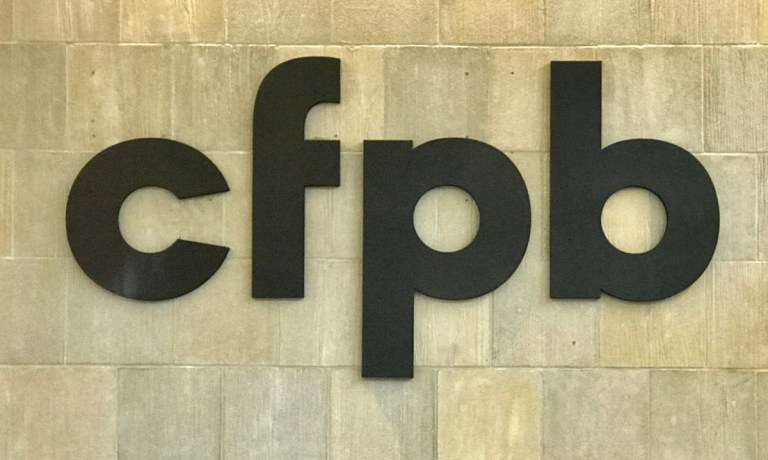
As Donald Trump retakes the reins of power, the uncertainty over who occupies the White House is over.
Republicans are retaking the Senate, and the House is still up for grabs as of Wednesday morning (Nov. 6). There’s at least some uncertainty removed from the legislative branch’s makeup.
There’s also new uncertainty, however. What happens to the Consumer Financial Protection Bureau’s ambitious rulemaking agenda? Proposed rules are still outstanding, covering everything from remittances to credit reporting to the use of financial data.
The CFPB is a government entity. The director is appointed by the president and is subject to Senate confirmation for the requisite five-year term. Director Rohit Chopra took the helm in 2021, so his term is up in 2026.
It must be noted here that in 2024, the Supreme Court ruled that the very funding mechanism of the CFPB is constitutional, in effect short-circuiting some conservative lawmakers’ efforts to raise existential questions about the bureau and pave the path toward its shuttering.
The institution survives, then, but there’s a wrinkle in the mix, which may hint at a shortened tenure for Chopra. In 2020, the high court ruled that the president has the authority to fire the CFPB’s director and look to install a successor (who must be confirmed by the Senate).
The jury is out as to what will happen when Trump marches back into the Oval Office. Given that Chopra was appointed by President Joe Biden and that new administration tend to place their own choices in various regulatory and governmental roles, however, it’s not a given that Chopra will serve through 2026. If a hypothetical new director comes in who is decidedly less active on the regulatory front, we may see a reckoning for the rules currently under development. (The CFPB can also revoke rules that have already been finalized.)
In addition to the card fee caps that went into effect in the spring (and which are a possible headwind to financial services innovation), what happens to the other rules that have been finalized?
Perhaps front and center is what might happen with the open banking rule, which was finalized and subsequently challenged in court by the Bank Policy Institute and the Kentucky Bankers Association last month. The CFPB contended that the rule promotes competition among incumbent banks by giving consumers control over their data and making that data portable so that individuals can more easily switch financial service providers if they so desire. Banks have pushed back, charging that data-sharing has poorly defined parameters of liability and the compliance timelines are onerous. They also allege that the CFPB has overstepped its legal authority.
Generally speaking, financial services stocks soared Wednesday, likely on the removal of uncertainty, but also on the prospect of regulatory rollbacks. Buy now, pay later (BNPL) names were especially notable, as Affirm’s stock rallied 7% at the open, and Sezzle gathered more than 9%.
There’s a lawsuit winding through courts that aims to stop a rule from the CFPB that would extend the same disclosure practices that are hallmarks of credit cards to these digital startups.
The suit, filed by the Financial Technology Association, contended that the disclosure mandates are “ill-fitted” for BNPL products. The BNPL forms would have to adopt Regulation Z obligations governing account disclosures, billing statements, returns and disputes.
The FTA’s suit stated that complying with periodic statement issuance — as applies to credit cards — is “infeasible for BNPL products.” There would also be the need to embrace a “significant buildout of technology and processes” to satisfy requirements tied to billing error disputes.
The following is a short guide to what is still on the regulatory roadmap as proposed rules, although the situation can be fluid.
Remittance Transfers Under the Electronic Fund Transfer Act (Regulation E)
The CFPB in September proposed what it termed a “narrowly tailored amendment” to Regulation E. The regulation applies to fees and limits and how information is conveyed.
The amendment would, per the CFPB, “ensure that consumers sending a remittance transfer have information about the types of inquiries that may be most efficient to direct to the CFPB and the state agency that licenses or charters their remittance transfer provider.”
The proposed rule is still open for comment.
Financial Data Transparency Act Joint Data Standards
At the end of July, the CFPB, along with the Office of the Comptroller of the Currency, Board of Governors of the Federal Reserve System, Federal Deposit Insurance Corp. and other agencies proposed a rule establishing data standards across those agencies. The joint rule was mandated by the Financial Data Transparency Act of 2022.
Among the tenets of the proposed rule would be to render data searchable and machine-readable across all stakeholders.
Consumer Credit Offered to Borrowers in Advance of Expected Receipt of Compensation for Work
The CFPB proposed an interpretive rule in July that would apply broad-based federal lending laws to earned wage access providers. At least some of the EWA payments would be classified as consumer loans.
Critics charged that EWA payments should not be treated as loans and might force the providers to reconfigure business models.
Prohibition on Creditors and Consumer Reporting Agencies Concerning Medical Information (Regulation V)
In June, the CFPB issued a rule that removes medical debt from credit reports.
Among the critics of the proposal, Rep. Patrick McHenry of North Carolina, chairman of the House Financial Services Committee, said stripping medical debt from credit reports “will have a negative impact on our credit and healthcare systems. It is badly misguided to remove consequences for consumers who do not pay a debt by wiping out an entire category of debt from credit reports.”